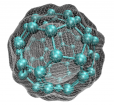

Showing 41 - 60 of 3628 results


Methods and Instruments
ANSTO Instruments involved in reconstructing Australia's fire history.
Iron and Fire
Using geoarchaeology to reconstruct the history of an ancient Khmer city.

Food and health
Consumers want to know that the foods they consume provide health benefits. Food materials science can monitor changes during digestion as well as assist in the development of low-fat products.

Expertise and Infrastructure
Technical information on instruments, facilities, and access for users. The Centre is one of three research infrastructure facilities at ANSTO supported by NCRIS.

Accelerators and instruments
The Centre for Accelerator Science operates four ion accelerators with 11 on sources and 13 beamlines

Tritium & other LSC
Accurate low level tritiated water (HTO) data is an essential tool for groundwater dating and understanding groundwater recharge processes.
Detection and Imaging
Defence and aerospace
Energy and resources
Health and bioscience

Food and agribusiness

News and highlights
A selection of research highlights, instrument news and technical developments for scientists.

ANSTO: A global leader in radiation safety and radioactive waste management
ANSTO: Australia’s knowledge centre for nuclear science and engineering.

Waste Production and Consumables
ANSTO provides a summary of waste production and consumables for FY2022 - FY2023

Fuel and spent fuel
ANSTO researchers are undertaking the fabrication and characterising advanced fuels and investigating the key properties of nuclear waste and its long-term interaction with containment materials to improve safety for short and long-term storage.

Laboratory Equipment and Supplies
There is an extensive range of equipment, glassware and instrumentation available for use in the laboratories.

Feather Map of Australia

VASP and Quantum ESPRESSO
Water usage and discharges
ANSTO provides a summary of water usage and discharge for FY2022 - FY2023